A Bird Found In Africa Has A Distinct Jewel Tone Plumage That Is A Treat For All Bird Enthusiasts
Scientific name: Coracias caudatus, the Lilac-Breasted Roller is a member of the Coraciidae roller family. This bird is primarily found in parts of East and South Africa.
This gorgeous, jewel-colored bird has a proportionately large body with a sturdy little black beak. Its blue head is contrasted by sunset-colored cheeks.
The most distinguishable part of the bird is its vibrant lilac chest, which lightens as it approaches the throat.
The wings of the Lilac-breasted Roller span 50 cm to 58 cm from tip to tip. The mesmerizing dark blue color of the anterior wings perfectly complements the ocean blue of the inner part of its wings.
It also has a dark blue forked tail that ends in black streamers. The scaly, yellowish legs of this bird end in durable syndactyl feet, where the second and third toes are fused.
Mature male and female Lilac-breasted Rollers are similar in coloring, though male birds are considerably larger than their female counterparts.
On the other hand, the young birds of this species are differently colored than the mature rollers. Their tails lack black streamers, and their abdomens and chests are reddish-brown instead of lilac.
It is also believed that the Lilac-breasted Rollers mate for life, and because of this, some countries in Africa use the bird's feathers in an interesting marriage ritual!
Say hi to the Lilac-Breasted Roller
Their name originates from their mating display, which involves a series of complicated dives and swoops. They initially fly 10 meters up and then swoop down quickly with their wings closed.
They then maneuver side to side as they fly fast, accompanied by their loud and harsh cries to attract potential mates.
After a successful mating, it only takes 22 to 24 days for the female bird's eggs to hatch. The young cannot care for themselves, so it is up to their parents to ensure their survival.
Approximately 19 days after hatching, the plumes of the young roller will grow. They will remain under their parents' care for another month before venturing off on their own.
The Lilac-breasted Roller typically lays 2 to 4 eggs in a year.
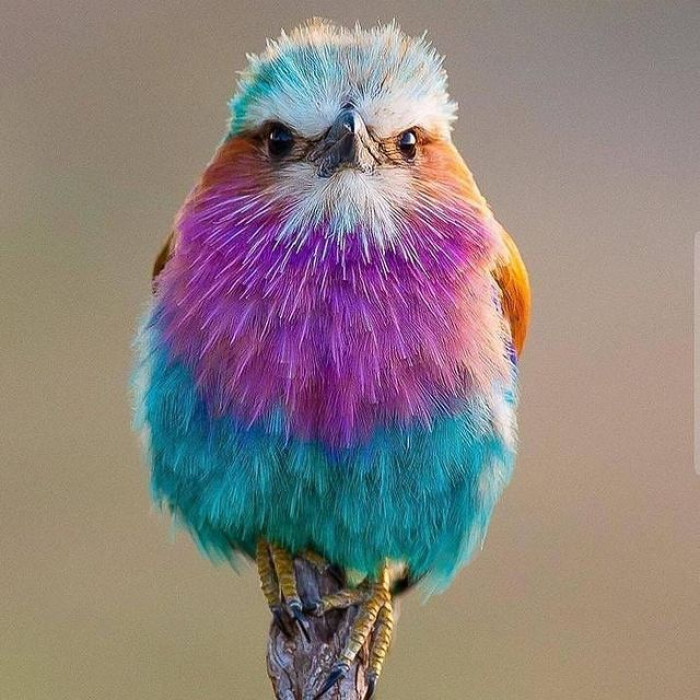
These birds prefer to live in trees and on tall posts, generally avoiding sparsely treed areas. They are not typically seen in places with heavy human traffic.
Though not aggressive, these birds are territorial. If any human or predator approaches their nest, even when they do not have eggs, you can expect the Lilac-breasted Roller to attack.
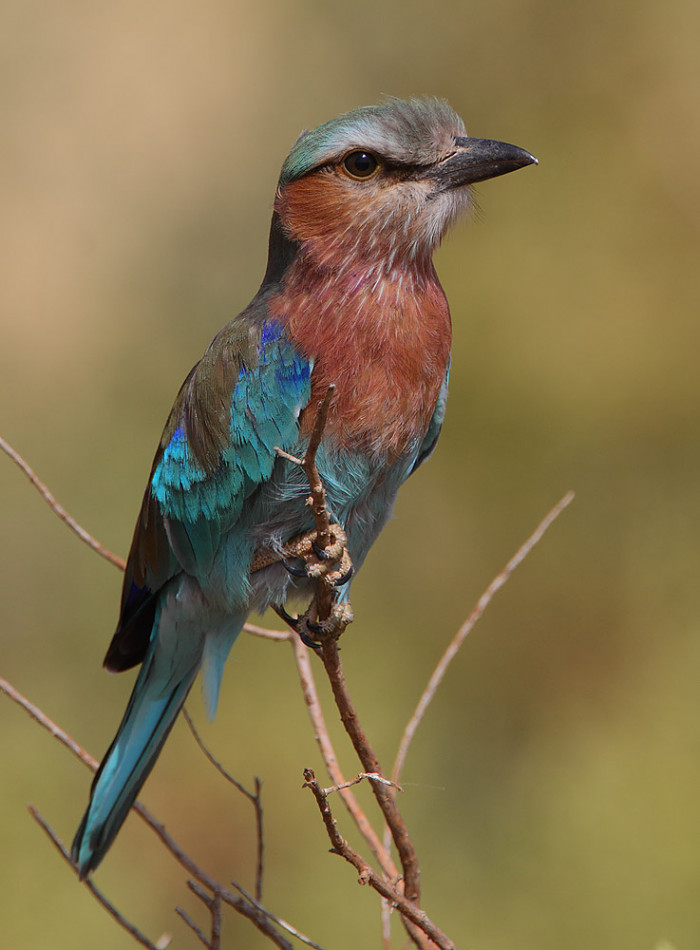
Their colorful feathers are used in many African rituals. Historically, it has been said that some African tribes consider these birds symbols of peace.
Kings and chieftains of tribes will sacrifice a Lilac-breasted Roller to celebrate the end of a war.
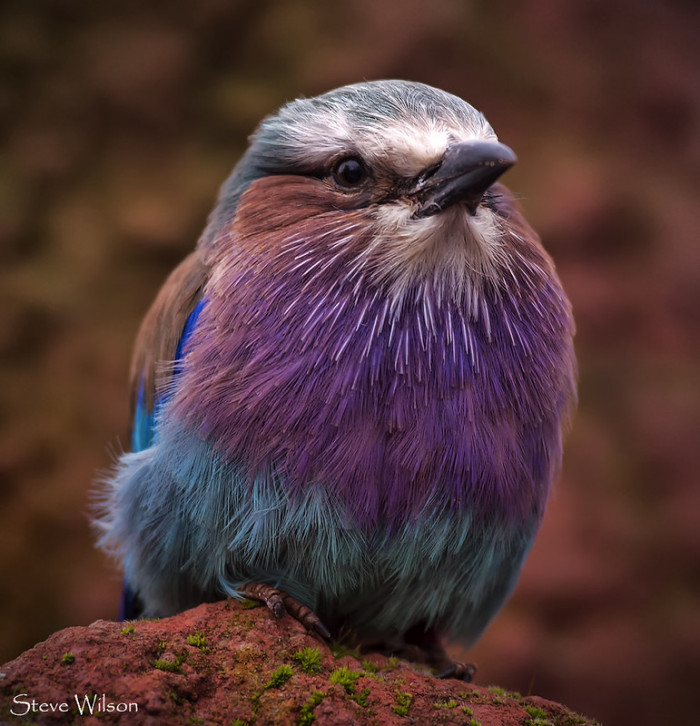
In another ritual, a young Zulu couple seeking to marry will be given a rope woven with the colorful feathers of the bird. They will then be tied together.
If the chain breaks, it means they cannot work together; therefore, they cannot marry.
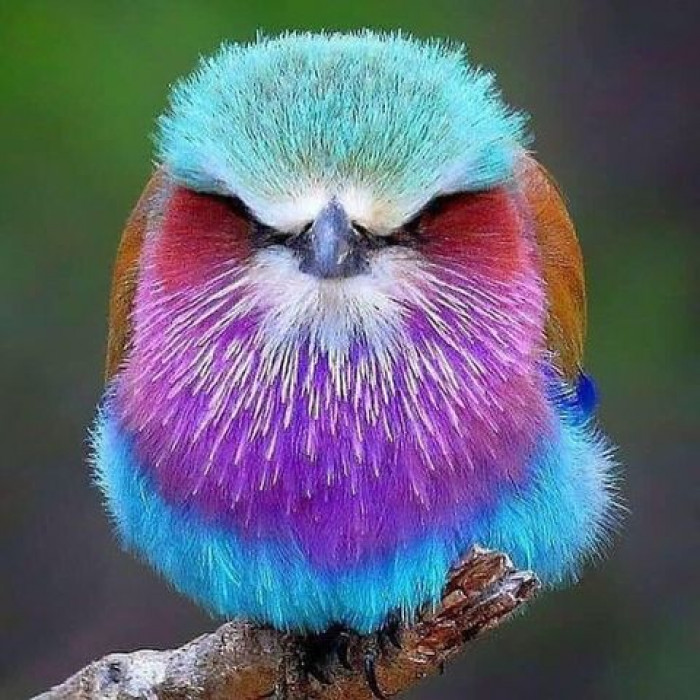
A Lilac-Breasted Roller perched on a high branch, surveying for prey

In contrast to its jovial colors, this bird enjoys hunting during brush fires. They hunt the small insects and rodents trying to flee the inferno.
They feed on beetles, grasshoppers, snails, lizards, and smaller birds. These birds beat their prey into submission using their wings and swallow them whole.

Still, this beautiful bird, a symbol of peace, is Kenya's national bird alongside the rooster!
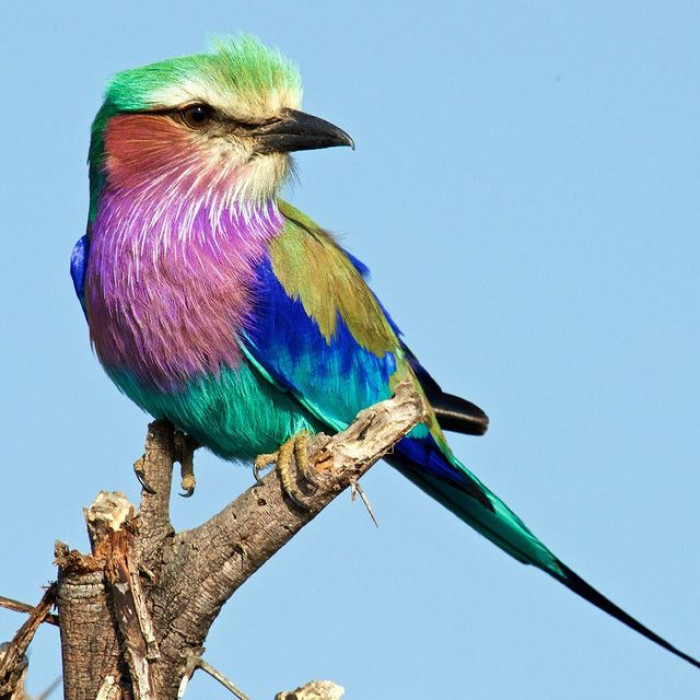
What a view of the bird's wings!

You can hear the call of the Lilac-Breasted Roller here:
With its beautiful colors and deep ties to some of Africa's historical traditions, the Lilac-Breasted Roller is truly one of nature's most beautiful creatures. It deserves to be a part of any bird-watcher's must-see list.
Even if you're not an avian enthusiast, when you get a chance to see this magnificent bird, don't hesitate to seize the opportunity. Of course, you have to share your rare experience with us, and don't forget to take lots of pictures!



